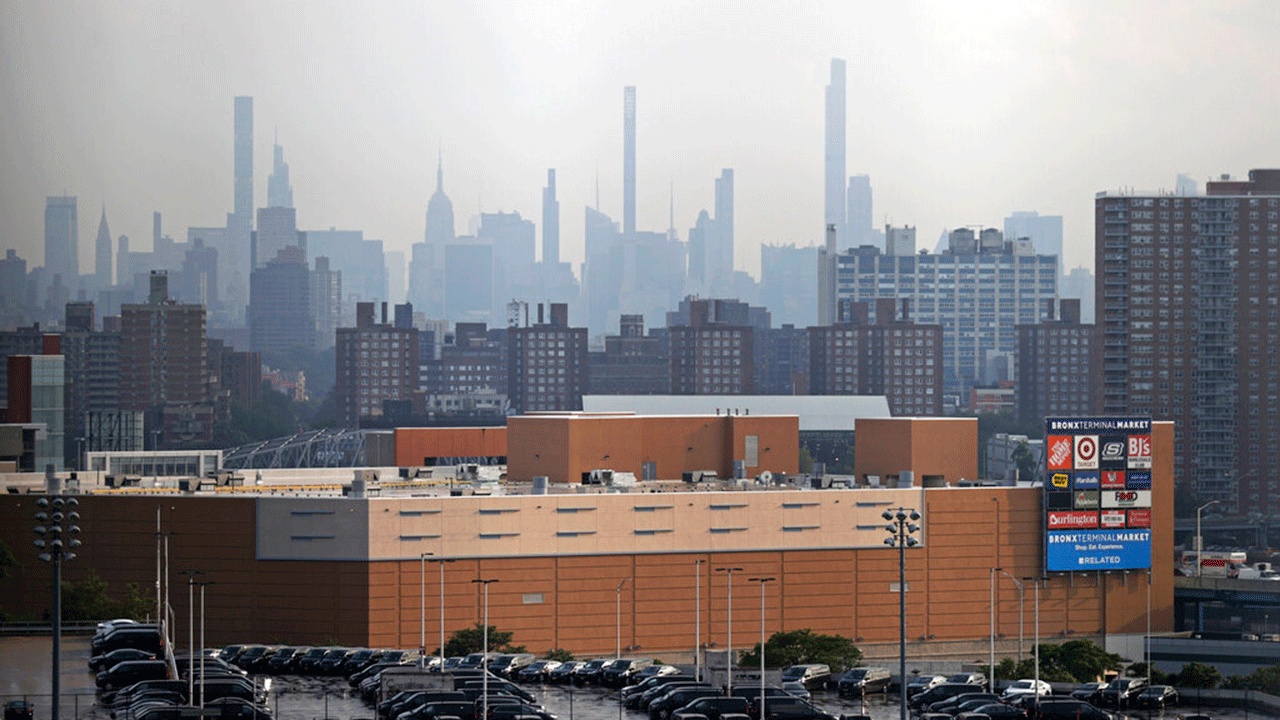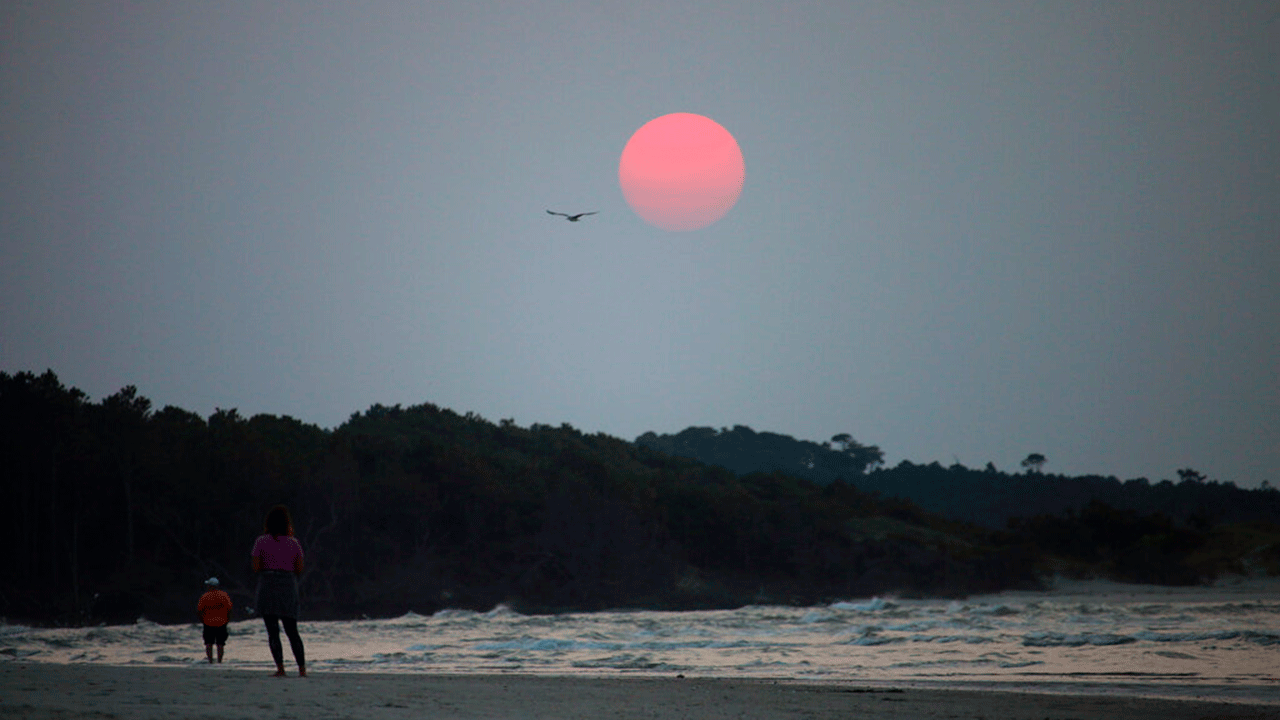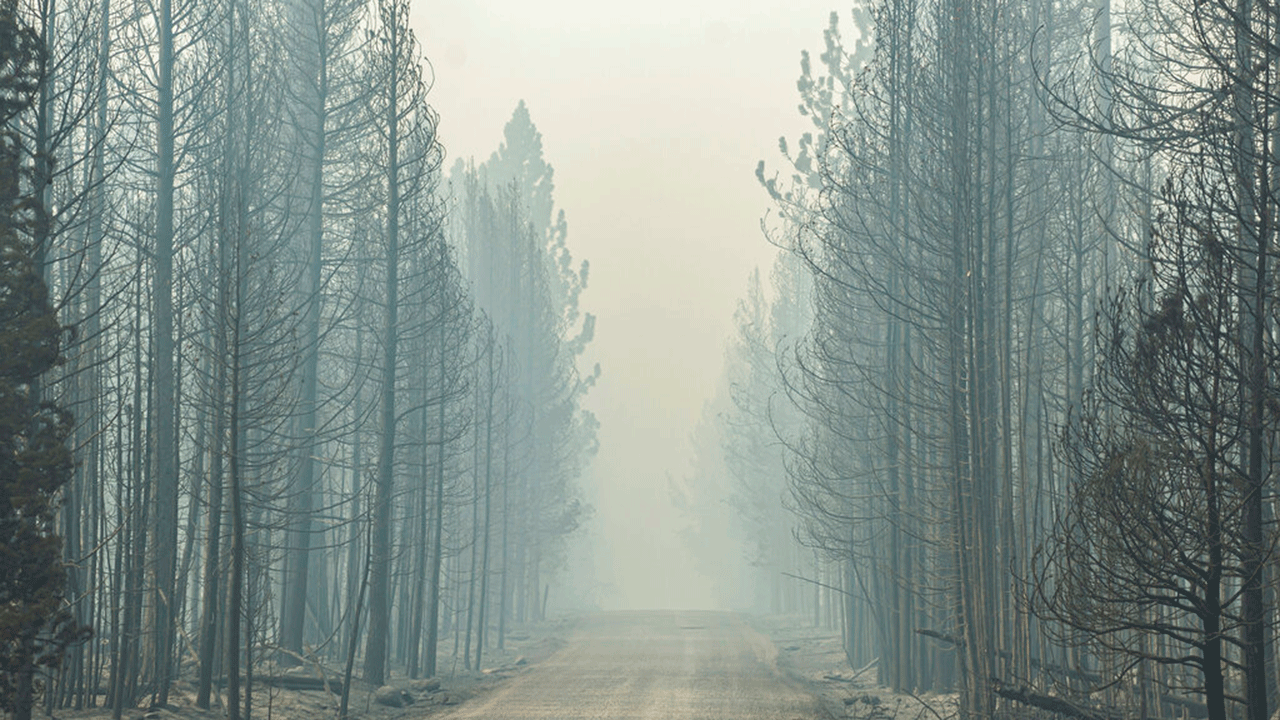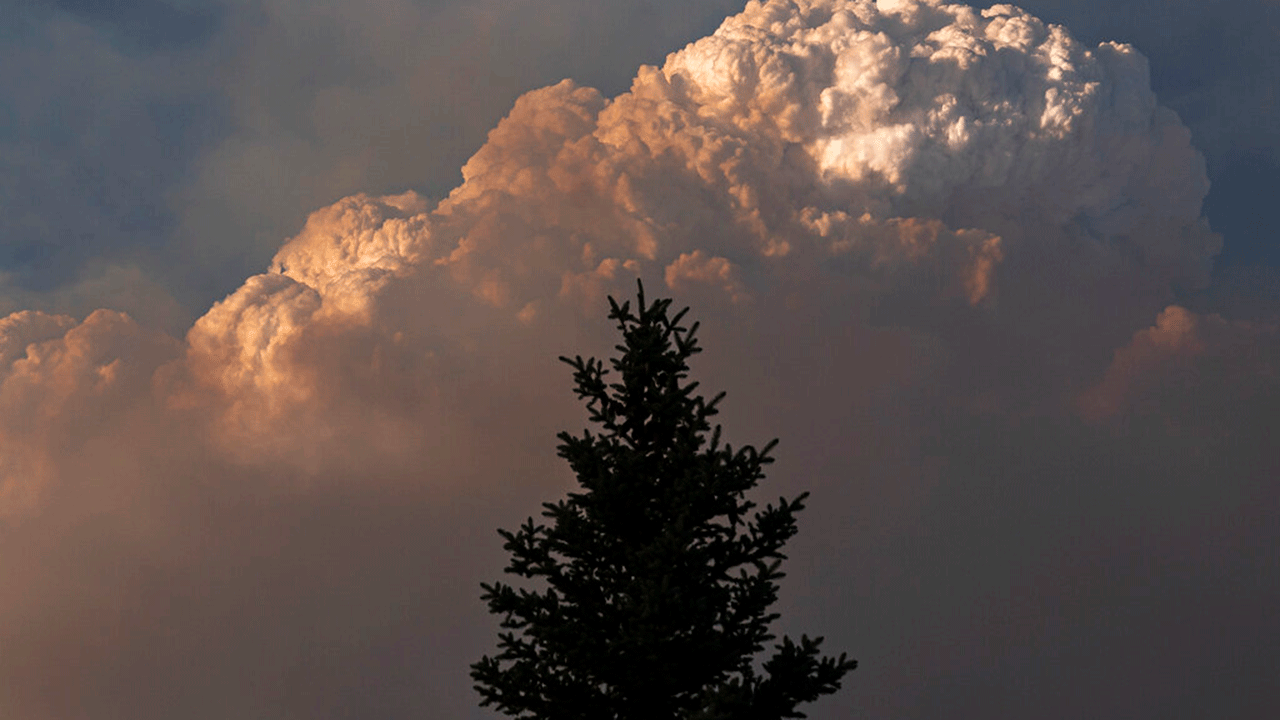Fox News Flash top headlines for July 23
Fox News Flash top headlines are here. Check out what's clicking on Foxnews.com.
Smoke from the nearly 80 wildfires burning more than 1.4 million acres across the U.S. has spread over thousands of miles during the past couple of weeks, raising health and safety concerns for residents of rural communities and major cities alike.
As close to 22,000 wildland firefighters and support personnel have worked to contain blazes like Oregon's monster Bootleg Fire, the eastern U.S. was overcome by unusually hazy skies this week.
WESTERN WILDFIRES: WHY THE SUN LOOKS RED OVER EASTERN STATES THIS WEEK
New York City, New Jersey, Pennsylvania and Washington, D.C., residents looked up in disbelief at a blood-orange sun, filtered by smoke blown in on the jet stream both from the West and fires in Canada.
It was a phenomenon that had occurred once before following an unprecedented wildfire season that gripped the nation last year, sending smoke from coast to coast in the fall.

Manhattan is seen from Yankee Stadium through a haze of smoke before a baseball game between the Philadelphia Phillies and the New York Yankees, Wednesday, July 21, 2021, in New York. Wildfires in the American West, including one burning in Oregon that's currently the largest in the U.S., are creating hazy skies as far away as New York as the massive infernos spew smoke and ash into the air in columns up to six miles high. (AP Photo/Adam Hunger)
Experts say this occurrence will become more common as human-caused global warming exacerbates and intensifies fires – and it's still early in this year's season.
According to the Environmental Protection Agency (EPA), the number of unhealthy air quality days recorded in 2021 by pollution monitors nationwide is more than double the number to date in each of the last two years.
In addition, Canada and the western U.S. were hit by record-shattering heat waves in June amidst a climate-driven "megadrought," creating tinderbox-like conditions in forests.
With infections from the COVID-19 pandemic trending upward once again – especially in Florida, Texas and Missouri – due to the virus's extremely infectious delta variant, smoke has become even more of a concern.
The U.S. Centers for Disease Control and Prevention (CDC) highlights on its website that recent scientific publications including Conticini et al., 2020 and Travaglio et al., 2020 suggest that air pollutant exposure worsens coronavirus symptoms and outcomes.
Wildfire smoke, a complex mixture of harmful air pollutants also known as PM 2.5, can irritate lungs, cause inflammation, alter immune function and increase susceptibility to respiratory infections, likely including COVID-19.

A couple walks along the beach in Cherry Grove, S.C., early Thursday, July 22, 2021. (Mark Rogers/The Sanford Herald via AP)
The agency recommends that Americans get a COVID-19 vaccine to protect from this threat – especially as more people are driven indoors by the smoke.
In addition, smoke exposure is linked to both long-term and short-term health issues, including decreased lung function, weakened immune systems, higher rates of flu and even hospitalizations and death.
According to the CDC, people with asthma, chronic obstructive pulmonary disease (COPD), heart disease, pregnant women and children are especially at risk, as symptoms can include trouble breathing, wheezing, coughing, asthma attacks, stinging eyes, scratchy throat, runny nose, irritated sinuses, headaches, fatigue, chest pain and increased heart rate.

Smoke from the Bootleg Fire lingers on Thursday, July 22, 2021, near Paisley, Ore. (AP Photo/Nathan Howard)
Air quality alerts were set for cities across the East and at-risk groups were instructed to avoid outdoor activities to reduce exposure, wear N95 masks, keep doors and windows closed and run an air filter to clean inside air.
CLICK HERE FOR THE FOX NEWS APP
"It’s certainly unhealthy," Jeff Pierce, an atmospheric scientist at Colorado State University, said of the air in recent days. "If you have asthma or any sort of respiratory condition, you want to be thinking about changing your plans if you’re going to be outside."
Americans are advised to create clean living environments, shelter in a cleaner air shelter or cleaner air space if the indoor air quality at home cannot be kept sufficiently clean and wear a fit-tested, NIOSH-approved N95 or P100 respirator, consults local guidelines and monitor the EPA’s Air Quality Indexexternal icon (AQI) forecasts and other resources.
The Associated Press contributed to this report.



